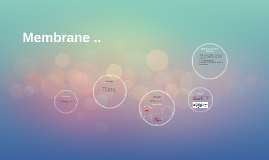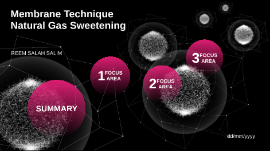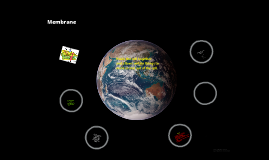membrane
Transcript: The hybrid flow process combines the dead-end and the cross-flow principle. As in the cross-flow filtration tubular membranes are with the filtration layer on the inside wall are used. With cross-flow filtration a constant turbulent flow along the membrane surface prevents the accumulation of matter on the membrane surface. The process is referred to as "cross-flow" because the feed flow and filtration flow direction have a 90 degrees angle. References Rate = 5c per min Membrane Uses in Wastewater Treatment Membrane characterizations Experiment Types of Membrane Processes Errors in thermal gravimetric analysis: Heating rate. Gases used. Mass of the sample. Difference between sample temperature and temperature inside the furnace. Thermal analysis was carried out by TGA in nitrogen atmosphere. Thermal gravimetric analysis is a type of testing performed on samples that determines changes in weight in relation to change in temperature. TGA is commonly employed in research and testing to determine characteristics of materials such as polymers, to determine degradation temperatures. Ultrafiltration (UF) is the process of separating extremely small particles and dissolved molecules from fluids. Conclusions Rate= 20c per min Scanning Electron Microscopy(SEM) Microfiltration Composition of Multicomponent Systems. Thermal Stability of Materials. Oxidative Stability of Materials. Estimated Lifetime of a Product. The Effect of Reactive or Corrosive Atmospheres on Materials. Department of chemical engineering Supervisor: The Electrospinning Process Dr. Fahad S. Al-Mubaddel Cross-flow Filtration By: Reverse osmosis (RO) separates salts and small molecules from low molecular weight solutes (typically less than 100 Daltons). Rate= 25c per min SCOPE AND DEVELOPMENTS Membrane in 40 years. Desalination of seawater and brackishwater. In feature. Preparation and Thermal Testing of Hydrogel Polymaric Membrane Used ForWastewater Treatment Feras Al-Qufi INTRODUCTION The most basic form of filtration is dead-end filtration. The complete feed flow is forced through the membrane and the filtered matter is accumulated on the surface of the membrane. Bright future. Environment. Energy. Quality. Hybrid-flow Filtration The polymer: "what's Chitosan" ? chitosan is widely used in many different fields, including medicine, food and chemical . The TGA results provided quantitative information on the chitosan nanofibers functionalization. The TGA of chitosan revealed that the bulk and the electrospun nanofibers decomposed in a single step. However, the onset decomposition temperature for chitosan nanofibers was 220 C, while for chitosan bulk was 300 C. The data obtained with this study demonstrated significant differences in the thermal stabilities between the starting physical form (chitosan bulk) and the electrospun chitosan nanofibers. By: Feras Al-Qufi Supervisor: Dr. Fahad S. Al-Mubaddel Types of Membrane Processes Reneker DH, Chun I. Nanometre diameter fibresof polymer produced by electrospinning. Nanotechnology Bowen, W. R., Calvo, J. I., and Hernandez, A. (1995). ‘‘Steps of membrane blocking in flux decline during protein microfiltration.’’ J.Membr. Sci., 101, 153–165. C.M. Modise, H.F. Shan, R.D. Neufeld, R.D. Vidic Evaluation of Permeate Flux Rate and Membrane Fouling in Dead-End Microfiltration of Primary SewageEffluent,Environmental Engineering Science. Jul 2005, Vol. 22, No. 4: 427-439. Dead End filtration:www.kingston.ac.uk/koenders/steffwork/classicf/index.html. Hermia, J. (1982). ‘‘Constant pressure blocking filtration laws—application to power-law non-Newtonian fluids.’’ Trans. Inst. Chem.Eng., 60, 183–187 Kilduff, J., and Weber, W. J. (1992). ‘‘Transport and separation of organic macromolecules in ultrafiltration processes.’’ Environ. Sci. Technol., 26, 569–577. Ku¨chler, I. L., and Miekeley, N. (1994). ‘‘Ultrafiltration of humic compounds through low molecular weight mass cut-off level membranes.’’ Sci. Total Environ., 154, 23–28. Millipore handbooks Overview of membrane filtration, http://www.millipore.com/ehandbook.nsf/docs/Ufmembranefiltration. R.B. Bai, H.F. Leow, Modeling and experimental study of microfiltration using a composite module, J. Membr. Sci. 204 (2002) 359. Yuan, W., and Zydney, A. L. (1999). ‘‘Humic acid fouling during micro- filtration.’’ J. Membr. Sci., 157, 1–12. http://en.wikipedia.org/wiki/Thermal_analysis Iritani, E., Mukai, Y., Tanaka, Y. and Murase, T. (1995). Flux decline behaviour in deadend microfiltration of protein solutions. Journal of Membrane Science, 103, 181-191. Millipore handbooks Overview of membrane filtration, McCrum N. G., Buckley C. P., Bucknall C. B., Principles of Polymer Engineering, Oxford University Press, 1997. Characterizations are important aspect to understand the performance of materials under service conditions. Thermal Gravimetric Analysis (TGA). Scanning Electron Microscopy(SEM). Chitosan nanofibers with ultrafine structure were successfully produced by electrospinning

















